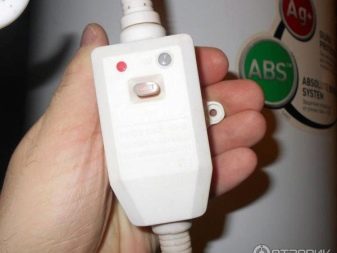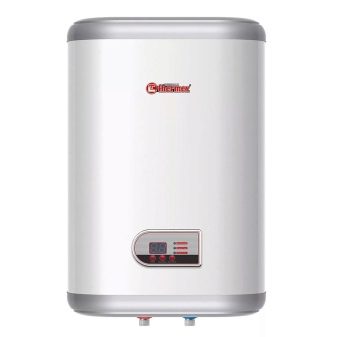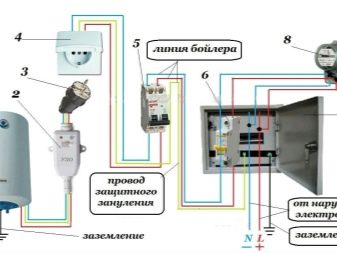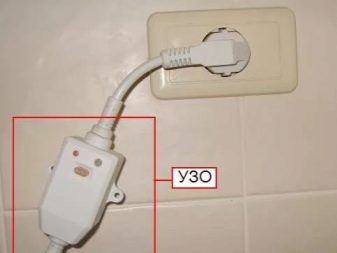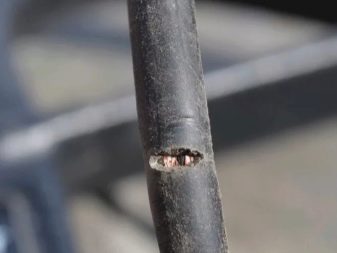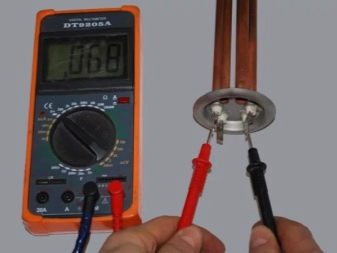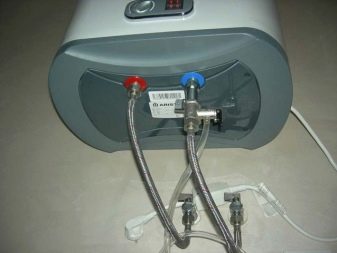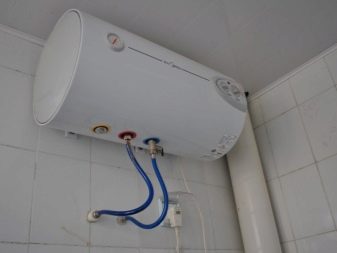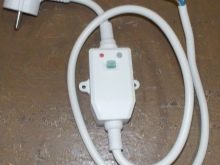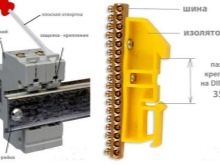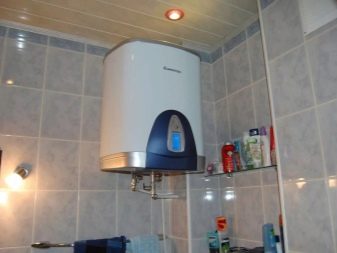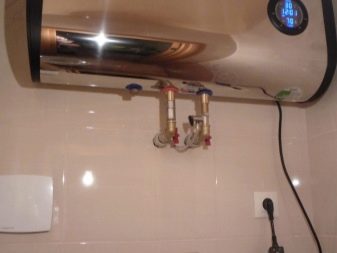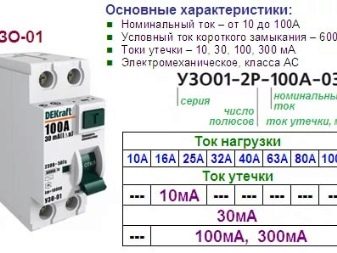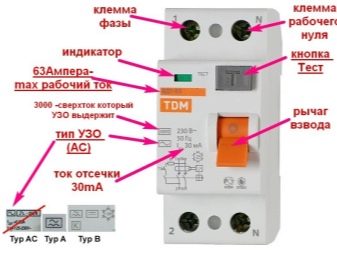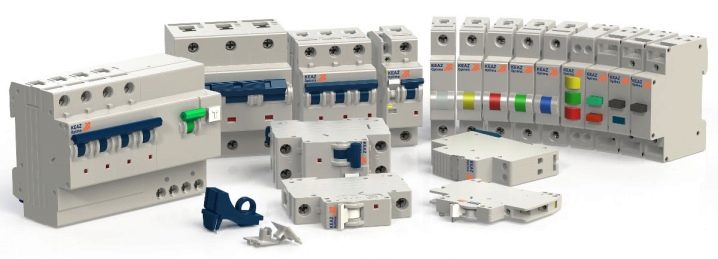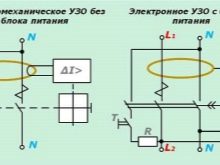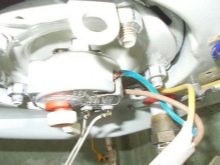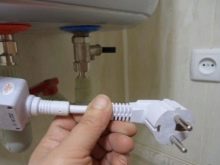RCD for water heater: what is it?
Electricity is a universal source of energy that can be used to heat water. This principle is very often applied in modern water heaters. However, water is a universal conductor, therefore it is necessary to limit the contact of conductive elements with it.
Basic concepts
Electric water heaters are devices in which the energy of a current is converted into heat, and then transferred to water. Conventionally, such devices can be divided into 2 groups:
- Flowing. Water heats up in them, passing through special systems with warm plates or pipes that instantly give it heat. Flow type heaters are very powerful.
- Cumulative. These include the usual boiler with heating elements, which consistently heats the water inside the tank.
The RCD for a water heater is a special device designed to protect against current leakage.
The principle of its operation can be described as follows:
- The device is installed directly in front of the heater itself. Through it passes all the current, which feeds the mechanism.
- If there is a leakage current inside the heater, then the RCD detects it, after which the entire system shuts down. His work is provided with special sensors and switches.
It should be noted that the RCD on the principle of operation resembles an automaton, but technically it is not. It captures even small fluctuations in current, which the automata are not able to analyze.
Today, such mechanisms do not always provide the optimum level of safety, so the water heater should also be equipped with an additional ground. RCDs should not be confused with diphavtomate, since they are two different designs. The first mechanism is able to catch only the leakage current, and the second is more universal: the difavtomat also reacts to shortshort circuits, overloads and other similar problems, while “knocking out” electricity.
Causes of tripping
Technically protective systems can not be used. However, for water heaters, they are mandatory attributes. This is due to the fact that the structures are made of metal, and the water itself conducts electricity well. The use of water heaters without protective systems is unacceptable, since it can become a threat to human life.
RCD is disabled for several main reasons:
- Damage to the insulation of the heater. It protects the entire system from the passage of current. Any user can calmly wash their hands without fear of defeat by electricity. However, in old or low-quality models of water heaters, this element may be damaged. One can check such phenomena only with the help of special devices.
- Leakage current. Very often, the UZO knocks out if the cable inside the boiler is damaged or the power cord itself. You need to pay attention to the fact that this can occur in almost any wire. Very often, the cable itself is damaged from the inside, after which current is supplied to the metal housing.To find the cause, it is often necessary to disassemble the heater and analyze the situation.
- The shutdown mechanism does not work. This happens very often with cheap products of unknown firms. They may simply not turn on after several triggers.
- Incorrect arrangement of the RCD. If the device is connected in the wrong place, then it will analyze the wrong currents. In the event of a heater breakdown, the system will not protect a person from current leakage.
How to choose?
RCDs are universal mechanisms that can be used to turn on and off various household appliances. It is possible to choose such a mechanism for an electric water heater, focusing on some simple rules, which will be discussed below:
- Power UZO is selected on the basis of a similar indicator of a household appliance, which is planned to be operated. For boilers with a capacity of not more than 2.3 kW, experts recommend installing mechanisms designed for 10 A. If this figure varies in the range of 5.5-8 kW, you should buy a RCD at 32-40 A. That is why it is so important to pay attention not only on the switch itself, but also on the connected device.
- Leakage current. This characteristic is calculated based on the operating current.Often, at 1 A, 0.4 mA is taken into account. If the RCD is installed at a remote distance, it is advisable to add another 10 µA per meter of cable. Minimize this value is easy if you install the device directly in front of the water heater.
- Mounting method. On the market there are several options for protective devices. The most common are RCDs that can be mounted on a DIN rail. Alternatively - separate units, allowing you to connect them directly to the outlet.
It should be noted that many modern manufacturers of water heaters embed similar appliances in their equipment.
Elements can be placed in an inconspicuous place - under the case or inside the network cable, so it is advisable to clarify this feature before buying a boiler. The advantage of this system is that the manufacturer accurately calculates all the characteristics of the RCD under the heater of a certain power.
Kinds
RCDs are not complex, but they can be classified according to several criteria. The devices are divided into the following types (depending on the type of current leakage):
- Class A. Used for alternating or pulsating electrical currents.
- Class AU. These devices are designed for AC operation only. They are one of the cheapest and simplest models used in many apartments.
- Class B. Universal devices for industrial use. They can be used not only for alternating, but also for direct or rectified current.
- Sometimes manufacturers add product labeling letter S, which indicates that the device turns off only after a certain period of time. There is no need to use such systems with water heaters in everyday life, so they are very rare here.
- Class G. These RCDs are similar to S, however, their holding time is much less.
Depending on the method of breaking the circuit, the RCD can be divided into the following groups:
- Electronic. They are relatively inexpensive devices that are used in simple systems. Experts do not recommend installing them, as they are powered from the electrical network. If the user accidentally damage the neutral wire, the device will simply fail. Another disadvantage is the relatively long response period.
- Electromechanical. Switches of this type are not powered from external electrical sources, so they are more reliable and of higher quality. The only drawback of such devices can be considered only their inflated price.
Connection
Get reliable protection against leaks by using RCD. However, you need to properly connect the device to the main network. Carrying out such operations, you should follow a few simple rules:
- The RCD should be connected directly in front of the boiler itself. In front of him are mounted an automatic machine of a separate line, and then a counter and a common input automaton for the whole house. If the electric line is used only for a specific water heater, then the order of arrangement of the RCD and the automaton is allowed. However, it is desirable to adhere to the first scheme.
- It is undesirable to place some additional sockets between the switch and the boiler or connect other household appliances. Experts recommend separate lines for heaters. RCD here should only control the boiler.
- Be sure to supplement the house with a common RCD, which will monitor the entire network.In the event of a malfunction of the device, the system will turn off with another device.
Technically connect the RCD is not difficult. On the case of each device there are input and output terminals. They connect the zero and phase wires (using special clips). At the outlet, wires are also used that go directly to the boiler or another heater.
One of the errors is the use of only one machine or RCD. It should be understood that these devices complement each other, as they are responsible for different threats. They need to be used in pairs.
UZO for a water heater allows to provide an optimum level of safety of its work. If it is necessary to obtain a high-quality and reliable system, then the design of electrical circuits and the installation of all protective devices should be trusted only to professionals.
You will learn more useful information about the RCD for the water heater in the next video.


